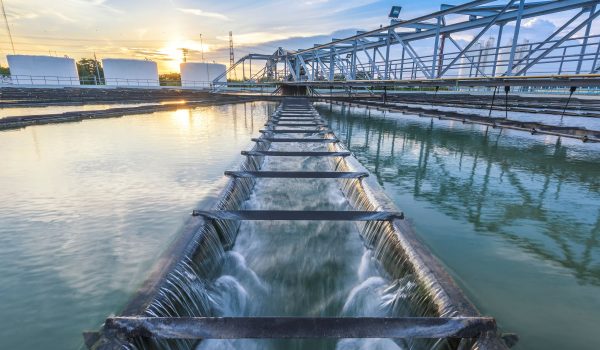Sackett v. U.S. Environmental Protection Agency, 143 S. Ct. 1322 (May 25, 2023)
Since 2001, the U.S. Supreme Court has had multiple opportunities to define the phrase “waters of the United States,” (“WOTUS”) used in the Clean Water Act’s (“CWA”) dredge/fill permitting program. In Sackett v. U.S. Environmental Protection Agency, the Court finally breathed some measure of clarity into the definition as it applies to developers and homebuilders who want to fill or grade wetlands.
Sackett arose from a long-running dispute between Michael and Chantell Sackett and EPA and the Army Corps (“the Agencies”) over the Sacketts’ efforts to build a home on property near Priest Lake, Idaho. In preparation for construction, they backfilled the lot with rocks and dirt. The property was separated from Priest Lake by a large roadway, a manmade ditch, and a substantial segment of a non-navigable, unnamed tributary. It also lacked any defined surface or subsurface connection with the lake. Nevertheless, the Agencies informed the Sacketts that their backfilling violated the CWA by discharging pollutants into WOTUS without a dredge/fill permit. According to the Agencies, the CWA applied because the Sackett’s property contained a wetland “adjacent” to Priest Lake, which was a jurisdictional WOTUS. Under guidance issued by the Agencies, the wetland was sufficiently close to Priest Lake, such that it had a “significant nexus” with the lake, and therefore filling it would adversely impact the lake and required a permit.
The Sacketts sued, arguing that their property was not subject to the CWA. The district court ruled for the Agencies, and the Ninth Circuit Court of Appeals affirmed. In an opinion authored by Justice Alito, in which the other eight justices either joined or concurred, the Supreme Court rejected the EPA’s “significant nexus” test to assert jurisdiction over the wetland on the Sacketts’ property. The Court explained that this test is (1) inconsistent with the text of the CWA, both as written and as interpreted in prior opinions, and (2) so vague and subjective that it fails to provide fair notice to the regulated community of its obligations, while imposing potentially severe civil and criminal penalties for those who run afoul of the statute, even inadvertently.
While unanimously rejecting further use of the “significant nexus” test for wetlands, the Court was divided as to the proper standard to be applied when determining whether a wetland is sufficiently “adjacent” to a WOTUS to require a dredge/fill permit.
- Justices Alito, Roberts and Barrett would require a “continuous surface connection” between the wetland and the WOTUS for the wetland to be jurisdictional.
- Justices Thomas and Gorsuch agreed with the continuous surface connection requirement, thus creating a majority in support of that requirement. But they wrote separately to express their view that the term “navigable” in the CWA also requires clarification, and they would limit the scope of WOTUS to include only “waters within Congress’s traditional authority over the interstate channels of commerce.”
- Justices Kavanaugh, Kagan, Sotomayor and Jackson wrote separately to opine that requiring a continuous surface connection between a wetland and a WOTUS improperly changes the statutory term “adjacent” into the term “adjoining.” Instead, they would rely on the “ordinary meaning” of the word “adjacent.”
While Sackett involved wetlands, there is no reason to believe that the Court’s rejection of the same “significant nexus” test would be limited only to that context, and not also apply to proposed filling/grading of small streams, which are often located miles away from the nearest WOTUS.
The Agencies must revise the definition of WOTUS yet again. For a “wetland” to be jurisdictional, the revised rule will have to focus on factors demonstrating a direct and continuous surface connection between the wetland and a nearby WOTUS. The Agencies will likely also need to also adopt similar factors to demonstrate a direct and substantial connection between small ephemeral/headwater streams and downgradient traditional waterways for those small streams to also be jurisdictional. The Agencies issued a draft revised rule in late July to OMB for its review, and have committed to issuing a final revised rule by early September 2023.
Key Takeaways
- For the CWA to apply to the proposed dredging/filling of a wetland, there must be a “continuous surface connection” between the wetland and a WOTUS.
- Sackett calls into question the continued use of the Agencies’ “significant nexus test” for small streams as well. The ruling likely portends the end of that test altogether.
- Sackett effectively overrules the Agencies’ revised WOTUS rule issued on January 18, 2023 (88 Fed. Reg. 3004). A new revised rule is expected to be issued in the next 30 days. Whether the Agencies interpret the ruling narrowly or broadly will be closely watched.
- Developers and homebuilders should reevaluate: (1) permit applications pending with the Army Corps; (2) jurisdictional determinations obtained from the Corps that have not yet been acted on; and (3) delineation reports obtained from consultants before the Sackett ruling, in order to determine the impact of the ruling on these important steps in the CWA’s Section 404 permitting process.
*A prior version of this article was issued as a client alert and published on May 26, 2023.
Want more U.S. Supreme Court coverage?
Explore the full wrap-up and analysis from our Appellate Practice Group on the most consequential rulings for businesses and industries during the 2022-2023 U.S. Supreme Court term.

